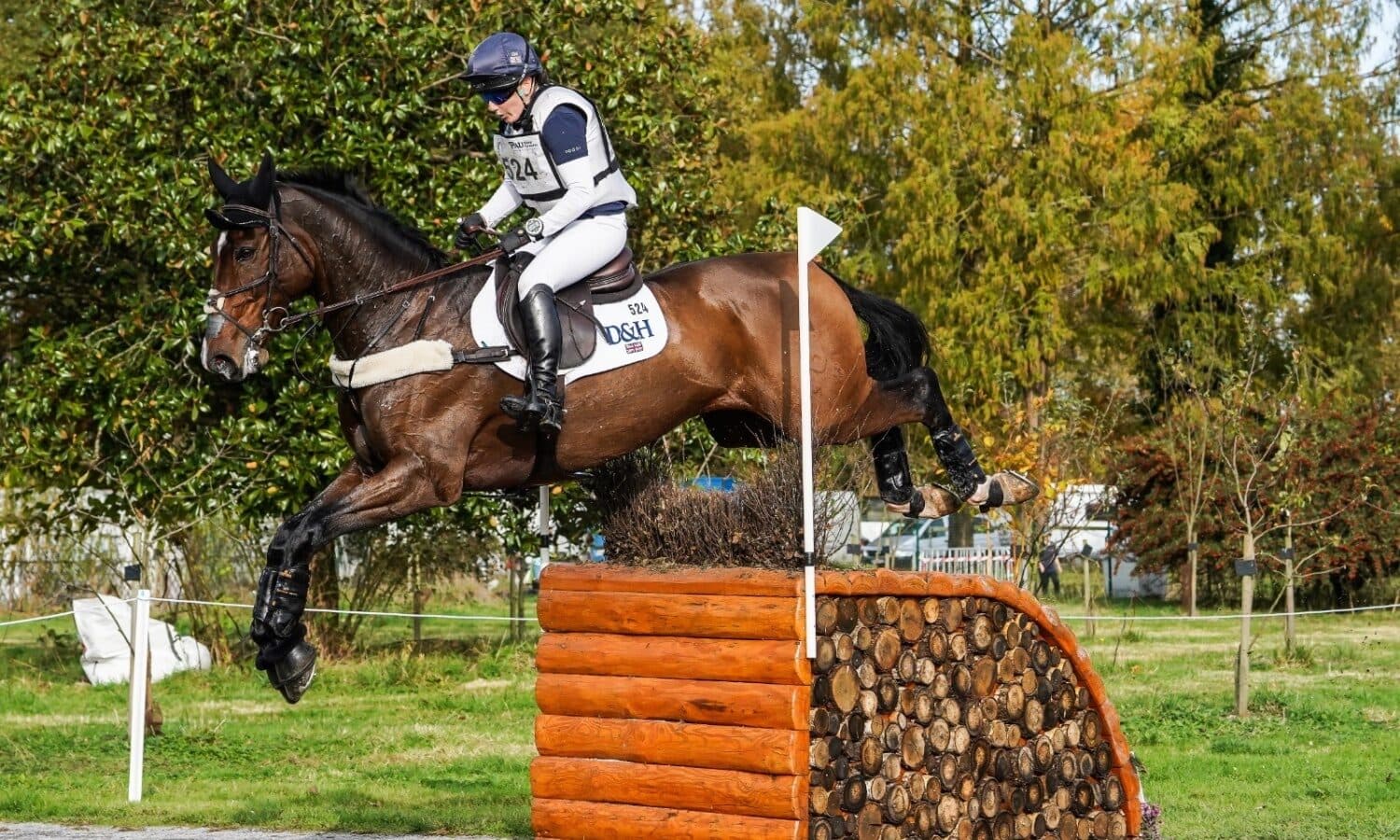Eight Ways to Make Sure Your First Cross-Country Schooling Session is a Success

British CCI5*-L winner Laura Collett is recognized as a first-class producer of young event horses. Here are her top tips for introducing your young horse to cross-country:

1. Preparation is key
Collett says: “I would practice the questions that cross-country asks of your horse in the arena at home first. You can simulate narrow fences - using poles as wings - and jump small fences on angles, practice your accuracy, and get the right line. Always use flags on the fences so that the horse learns he must always jump through the flags. A water tray can be used to practice a ditch, and you can even simulate “coffin” (rail-ditch-rail) questions with poles and a water tray.
“By introducing your young horse to the types of things he will encounter on a cross-country course, you can gauge what his reaction might be to the ‘real thing’ and start the education process in a controlled environment.”
2. Establish control
“When you get to wherever you are cross-country schooling, the first thing you should do while you are warming up is practice control - can you go forward, stop, turn in each direction, lengthen and shorten the stride? It’s exciting and strange for a horse to be somewhere new, and they will probably feel different from the way they do at home. This helps to get them listening to you and concentrating on what you are asking, and means you know whether or not you have got brakes and control.”
3. Take a companion
“While horses need to learn to do things independently, it’s a good idea to take another quiet, more experienced horse (and rider) as a companion the first time they go cross-country schooling. They can give you a lead if necessary and should be a calming influence. It’s nice to have support yourself, as well.”
4. Use a neck strap
“I never ride any of my horses without a neck strap, and I would definitely advise using one for cross-country schooling. You can make one out of a stirrup leather if you don’t have one, and they are so useful. Tucking a couple of fingers underneath it means that if the horse does something unexpected like jump very big over a ditch or into the water the first time he encounters it, you won’t tip out of balance and catch him in the mouth.”
5. Don’t overdo it
“Keep your session quite short, focus on a few key things like water, steps, and ditches along with a small amount of straightforward single fences like logs, and make it all very basic. You aren’t there to actually practice jumping; you are there to teach your young horse about the different types of obstacles that cross-country involves.”
6. Be positive and keep rewarding
“From the beginning, even in walk and trot, think and act positively and make sure that the horse is forward and off your leg. And keep rewarding him - even if the way he does something isn’t as you planned, such as jumping very big over a ditch, reward him for doing what you asked, which is to go from A to B. It won’t be perfect, so don’t expect that, but reward him for doing essentially what you want him to.”
7. Water, steps, and ditches
“I always get another horse to give my young horse a lead into the water the first time. Stay in the walk with quite a long rein and walk in quietly following a friend. Walk around in the water, rather than straight out again, ask them to stand in it and give them a pat. They learn that it is a nice place to be and not scary. Keep doing that until they are fluent, then repeat in trot and eventually canter.
“Do the same with steps; trot in quietly with a long-ish rein so that the horse can put his head down and assess what you are asking without pressure. Have a lead horse ready so that if he hesitates on top of the step when you ask him to come down it, he has someone to follow, and it doesn’t become an issue. With ditches, find a nice, small ditch that he can step over first. I would try to go on your own first, but be prepared to take a lead if he needs one. Slip your reins and encourage him to look downwards at the ditch but continue forwards. Keep your body up and your leg on, and allow forward with the hand. Support with the leg, but don’t overpressure. Be ready for him to leap, use the neck strap and, while keeping your body in a slightly defensive position, don’t catch him in the mouth. When you get to the other side, stop, pat him, turn round and do it the other way. Repeat that until he is confident.”
8. Prepare for the future
“You don’t want to overfill his brain or ask too much - tackle an obstacle such as water, get him feeling confident and happy, and move on. I wouldn’t spend loads of time jumping fences, but I would choose something like a rolltop or log and get him bowling along in canter and jumping it out of his stride. Then I might use it to adjust his stride - pretend that it is the first element of a combination and shorten the canter so that he pops it, and begins to learn that you will ask him to change gear within the pace on a cross-country course.”














